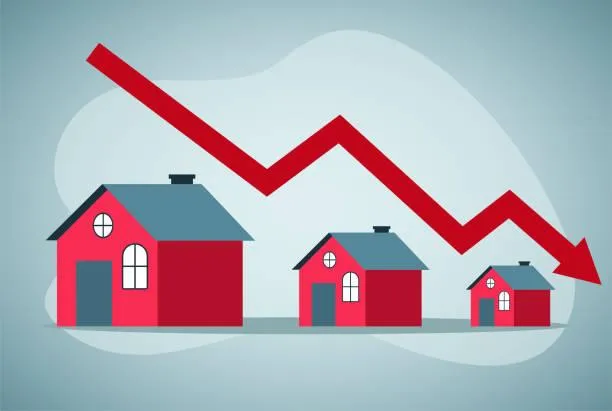
Fixed Mortgage Rates Are Dropping Again—Here’s Why
Introduction
If you're living in Canada, you've probably noticed a steady rise in the cost of groceries, housing, and rent over the past few years. What was once considered manageable has now become a significant strain on the average household budget. While inflation is a global phenomenon, the price surge in Canada seems particularly steep. This blog post will delve into the underlying factors contributing to the rising costs of living in Canada, focusing on groceries, housing, and rent, and will provide a critical analysis of the situation.
The Rising Cost of Groceries
One of the most immediate impacts felt by Canadians is at the grocery store. The price of food has surged, affecting everything from fresh produce to pantry staples. Several factors are at play here:
Supply Chain Disruptions: The COVID-19 pandemic severely disrupted global supply chains, causing delays and increasing transportation costs. Even as the world recovers, these disruptions continue to ripple through the food industry, driving up prices.
Climate Change: Unpredictable weather patterns, driven by climate change, have impacted agricultural yields worldwide. Droughts, floods, and other extreme weather events reduce crop availability, leading to higher prices for consumers.
Labor Shortages: The agriculture and food processing sectors have faced labor shortages, partly due to the pandemic and restrictive immigration policies. This has resulted in higher wages, which are passed on to consumers.
Currency Fluctuations: The value of the Canadian dollar affects the cost of imported goods. When the dollar weakens, as it has periodically, imported food becomes more expensive, contributing to overall grocery bill increases.
The Housing Market: A Perfect Storm
The Canadian housing market has seen unprecedented price growth, making home ownership a distant dream for many and pushing rent prices to new heights. The factors behind this surge are complex:
Low-Interest Rates: For years, historically low-interest rates made borrowing cheaper, encouraging more people to buy homes and invest in real estate. This increased demand, coupled with a limited supply of housing, drove prices skyward.
Supply Constraints: Zoning laws, slow approval processes, and a lack of new housing developments have all contributed to a limited supply of homes, particularly in urban areas. This scarcity has fueled competition and driven prices higher.
Foreign Investment: Canada’s stable economy and attractive real estate market have drawn significant foreign investment, particularly in cities like Vancouver and Toronto. This influx of capital has further inflated property values, making it even harder for local buyers to compete.
Urbanization: As more Canadians migrate to cities in search of employment and better opportunities, demand for housing in urban centers has outstripped supply, driving both home prices and rents up.
Speculation and Investor Activity: Real estate speculation, where investors purchase properties with the intention of flipping them for profit, has also played a role in driving prices up. This speculative activity creates a cycle where prices continue to rise, making housing less affordable for the average Canadian.
Renting: A Bleak Alternative?
For those unable to buy, renting is often the only option, but this too has become increasingly unaffordable. Several factors contribute to the rising cost of rent:
Supply and Demand Imbalance: The limited availability of rental properties, particularly in major cities, has led to fierce competition among renters. Landlords can demand higher rents as a result.
Rent Control Limitations: While some provinces have rent control measures in place, these often apply only to existing tenants. New tenants face market rates, which continue to climb as property values increase.
Short-Term Rentals: The popularity of platforms like Airbnb has taken many properties out of the long-term rental market, reducing supply and driving up rents.
Increased Operating Costs for Landlords: Rising property taxes, maintenance costs, and other expenses are often passed on to renters, further exacerbating the affordability crisis.
Conclusion: Navigating the Crisis
The rising cost of groceries, homes, and rents in Canada is a multifaceted issue with no easy solution. It reflects broader global trends, such as climate change and supply chain disruptions, but also local factors like government policy, urbanization, and investment practices.
Addressing these challenges will require a concerted effort from policymakers, industry leaders, and consumers alike. Policies that encourage sustainable agricultural practices, support affordable housing development, and regulate speculative investment in real estate could all play a part in easing the burden on Canadians.
In the meantime, it's crucial for Canadians to stay informed and advocate for changes that will make life more affordable. While the current landscape may seem daunting, understanding the factors at play is the first step toward finding solutions.
Call to Action
How have rising costs affected you? Share your experiences in the comments below, and let’s discuss how we can collectively address these challenges in our communities.
This blog post critically analyzes the factors contributing to the rising cost of living in Canada, providing readers with insights into the challenges they face and potential solutions for the future.